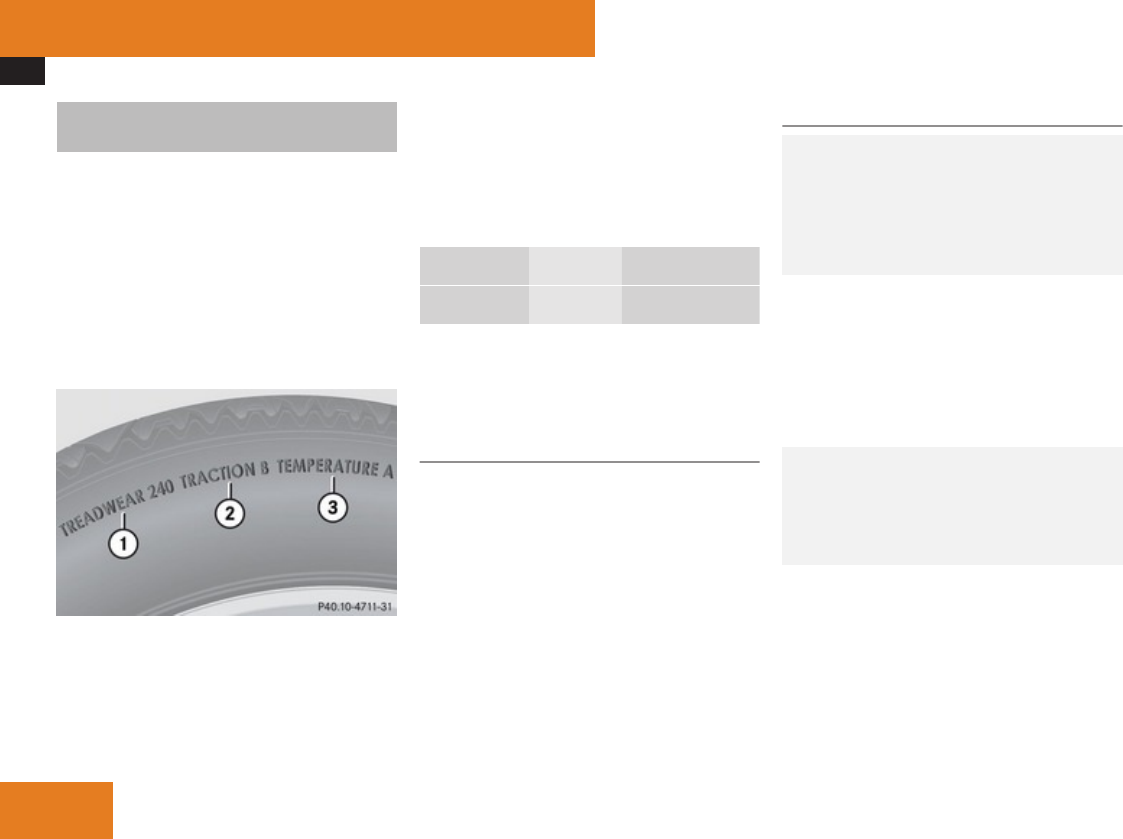
Tires and wheels
226
Uniform Tire Quality Grading Stand-
ards
The Uniform Tire Quality Grading is a U.S.
Government requirement designed to give
drivers consistent and reliable information
regarding tire performance. Tire manufactur-
ers are required to grade tires based on three
performance factors: treadwear, traction,
and temperature resistance. Although not a
Government of Canada requirement, all tires
made for sale in North America have these
grades branded on the sidewall.
1
Treadwear
2
Traction
3
Temperature resistance
i
For illustration purposes only. Actual data
on tires are specific to each vehicle and
may vary from data shown in above illus-
tration.
Quality grades can be found, where applica-
ble, on the tire sidewall between tread
shoulder and maximum section width. For
example:
Treadwear Traction Temperature
200 AA A
All passenger car tires must conform to fed-
eral safety requirements in addition to these
grades.
Treadwear
The treadwear grade is a comparative rating
based on the wear rate of the tire when tested
under controlled conditions on a specified
U.S. Government test course. For example, a
tire graded 150 would wear one and one-half
(1
1
/
2
) times as well on the government
course as a tire graded 100.
The relative performance of tires depends
upon the actual conditions of their use, how-
ever, and may depart significantly from the
norm due to variations in driving habits, serv-
ice practices and differences in road charac-
teristics and climate.
Traction
G
Warning!
The traction grade assigned to this tire is
based on straight-ahead braking traction
tests, and does not include acceleration,
cornering, hydroplaning, or peak traction
characteristics.
The traction grades, from highest to lowest,
are AA, A, B, and C. Those grades represent
the tire’s ability to stop on wet pavement as
measured under controlled conditions on
specified government test surfaces of asphalt
and concrete. A tire marked C may have poor
traction performance.
G
Warning!
If ice has formed on the road, tire traction
will be substantially reduced. Under such
weather conditions, drive, steer and brake
with extreme caution.
The safe speed on a wet, snow covered or icy
road is always lower than on a dry road.
You should pay particular attention to the
condition of the road whenever the outside
temperature is close to the freezing point.
Mercedes-Benz recommends winter tires
(Y page 231) with a minimum tread depth of
approximately
1
/
6
in (4 mm) on all four wheels
Operation


















